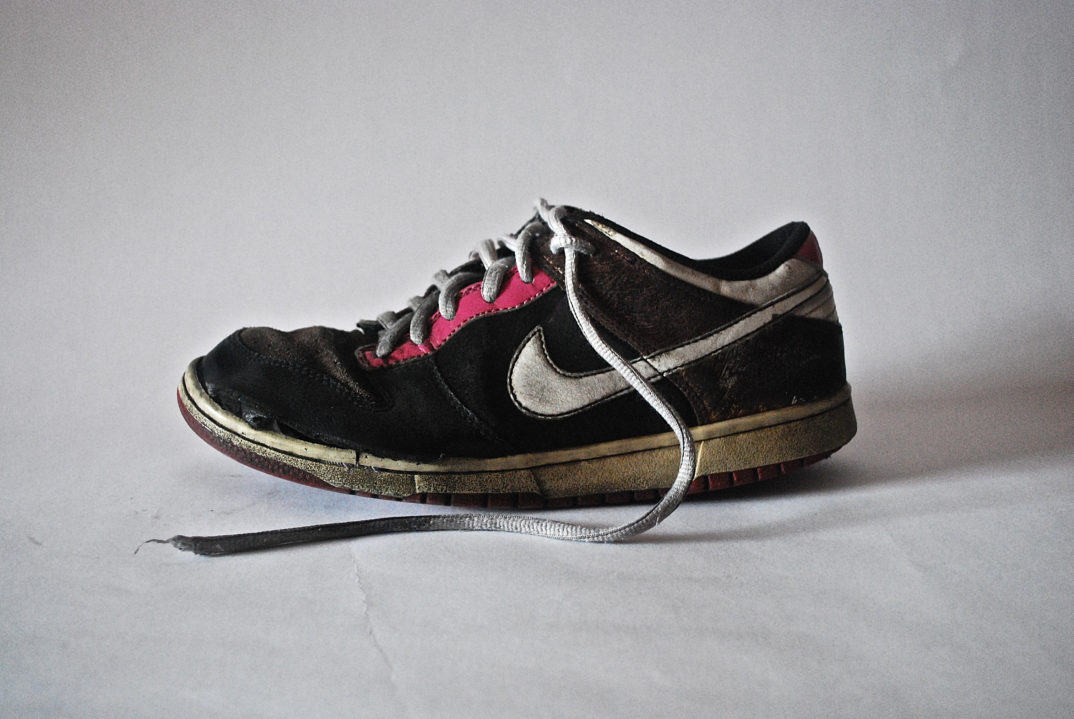Commodifying Activism
This article has a set of discussion questions tailored for classroom use. Click here to download them. To see a full list of articles with discussion questions and other resources, visit our “Educational Resources” page.
Recently, Nike aired an advertisement that sparked a lot of cultural and political buzz. This ad contained professional football player, Colin Kaepernick, a man who has become a household name in political discourse through his protest to police brutality, delivering a simple message: “Believe in something, even if it means sacrificing everything.”
Since the airing of this ad, there has been a considerable backlash with a variety of Twitter hashtags like #justburnit or #BoycottNike becoming increasingly popular. Despite this response to Nike’s use of Kaepernick’s controversial figure, the value of Nike’s stock has only risen and sales have increased. Nike’s promotion has helped spread awareness and increase support for Kaepernick, but what right do companies with a history like Nike’s have to be champions of social justice?
Nike has a notorious history of utilizing sweatshops and child labor and not only that, but they just signed a new contract with the same league that has collectively barred Kaepernick from playing. This amalgam of good and bad aspects of Nike’s support for social justice begs the question: is it ethical for companies to commodify social and political activism? And what are its effects on our societal norms? In the following paragraphs, I will explore how similar ad campaigns have informed their respective social justice movements and if there is an ethical way to market these movements within a consumerist economy.
Activism within consumerism can play many valuable roles: the increased awareness that marketing campaigns offer represents one of the most powerful ways for a social justice movement to take flight. One prominent example is the #LikeAGirl movement in 2015. In a commercial that was popularized after its airing during Super Bowl XLIX, children were asked to perform actions “like a girl.” According to Alana Vagionos of the Huffington Post, when the young boys acted out these things, “Instead of simply doing these actions, each person weakly reenacted them, by accidentally dropping the ball or slapping instead of punching,” making it clear that in American culture femininity is often synonymous with weakness. As Vagionos notes, the phrase “like a girl” is similar to saying something is “gay” — both are used in a derogatory manner. But when little girls were asked to complete the same actions “like a girl,” they did so with vigor, strength, and confidence.
Efforts like this, while ultimately designed to generate more profit, can be very productive in shifting public opinion on social issues. According to a case study done by D&AD, almost 100 million people viewed the commercial on YouTube alone and prior to watching the clip, just 19% of 16-24 year-olds had a positive association toward the phrase “like a girl.” After watching, however, 76% said they no longer saw the phrase negatively. So, from the standpoint of publicity and raising awareness of the larger issues at play, this type of activism seems fruitful.
However, there are many who object to commodifying activism. While there is potential for positive change, there is also the possibility of further reinforcing inequality and exacerbating damaging societal norms. Using movements like #BlackLivesMatter to promote a new product line or a special offer dilutes the meaning and value of these symbols and covers over systemic power inequalities.
One campaign that demonstrates many of the faults in retail activism is the “NIKE(RED)” campaign put on during the 2010 World Cup. This movement sought to increase awareness and funding for programs that combat the AIDS epidemic through a new line of merchandise emphasizing the color red. But Spring-Serenity Duvall and Matthew C. Guschwan believe that this “retail activism” reinforces colonial norms, asserting in Communication, Culture and Critique that this campaign simplifies an extremely complex global health predicament.
They claim that it further reinforces the way that Western consumers view the people in need of aid. It exacerbates the perceived divide between the aid recipients and the consumers and does nothing to increase solidarity between them. Ultimately, the “NIKE(RED)” movement,
“perpetuat[es] images of hierarchies that privilege Western consumers and marginaliz[es] African peoples whom the organization seeks to aid […] The ‘us’ and ‘them’ dichotomy positions Western consumers as a powerful force and Third World peoples as passively in need of aid. So, a major contradiction within (RED) is that while consumer-based campaigns use rhetorics of unity, they ultimately rely on the individual, private, and personal expenditure of money that does not promote substantial social solidarity.”
Additionally, the simplified view that these campaigns perpetuate merely pacifies consumer bases rather than helping to resolve the issue. It breeds ignorance about the power structures in play and distorts the fact that these powerful brands are often contributors to the problem. Guil Louis of the Lawrentian says that “it seems as if social consciousness has become something that not just these celebrities can commodify, but so too can their sponsors.” The truth of the matter is that when it comes to retail activism, there is always an ulterior motive: the profit-making potential of the issue brought about in the advertisement. When meaningful change is a positive externality instead of the primary goal, Louis says that it will “pacify us and make it even more difficult to identify oppressive structures or conditions.”
It is clear that there are both benefits and detriments to this type of approach to activism, but it is important to be aware of the effects that this commercialization has on the movements themselves. Ultimately this approach to activism, while beneficial in some ways, is not enough if it is the only approach to activism. There are a variety of meaningful and effective ways to sway positive social change, and ultimately awareness, especially if diluted by a profit-making incentive, can only go so far without action.





